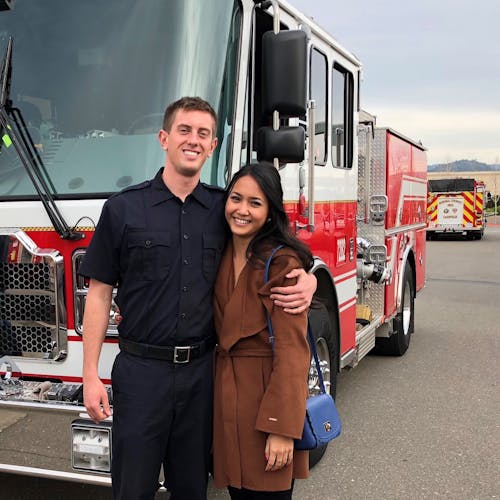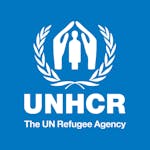Worldwide, people on the frontlines have been working around the clock to contain the COVID-19 pandemic. With the United States passing 12 million total cases this holiday season, nurses, physicians, and other health professionals will have their hands full – this is their story.
Inequitable access to health care has long been a challenge in the United States. Even before the COVID-19 pandemic struck, the system was plagued by exorbitant prices, lack of insurance coverage, and significant health disparities based on race, income, and zip codes. Compared with other developed economies, the U.S. has the highest health care expenditures, yet that investment is not reflected in its outcomes. It has a lower life expectancy than the average of the OECD (the group of the world’s richest economies), as well as lower levels of health care coverage.
Now, the COVID-19 virus has cast into sharp relief the extent of the weaknesses of the health care system in the U.S. and how social determinants of health can affect outcomes in entire communities. COVID-19, which has claimed the lives of more than a quarter-million Americans and counting, has been the test of a lifetime for the American health care system.
To truly put this into perspective, the United Nations Foundation spoke to frontline workers around the country who are carrying out their jobs in the thick of the ongoing waves of COVID-19. From a firefighter/EMT simultaneously responding to fires — a byproduct of another deep-rooted challenge, the global fight against climate change — and fielding medical calls, to a nurse practitioner providing guidance on health services to the most vulnerable segments of her community, we will be featuring Americans whose experiences illustrate the urgency of equitable access to quality health care, and why we must #UniteforHealth now.
MEET PATRICK RABBITT AND ISABELLE SALCEDO
Patrick Rabbitt is a firefighter/EMT working in northern California. His partner, Isabelle Salcedo, works as a registered nurse in a trauma intensive care unit (ICU). This year, the state experienced a record-breaking fire season, while COVID-19 infection rates have passed the 1 million mark, with increasing hospitalization rates and a recent surge in cases.
Describe your job and day-to-day duties on the front lines of COVID-19.
PATRICK RABBITT: Every day is different. It’s unpredictable. If I’m at the station — and not out on a strike team — we can get anywhere from four to eight medical calls a day. We see a lot of bad road accidents. We usually get called out for at least one fire a day.
ISABELLE SALCEDO: I’m an RN in the trauma ICU at a Level I trauma center. The area where I work was an early COVID hot spot in California, and things got really intense for us in April.
Our medical and cardiac ICUs were overwhelmed with COVID patients, and it wasn’t long before they ran out of beds. At the same time, we weren’t seeing as many traumas come in because of local shelter-in-place orders. People were staying home and off the roads. So we essentially became an overflow ICU for COVID patients.
What makes the community where you work unique? What are some of its demographics and specific needs?
PR: I work in one of the poorest counties in the state of California. A real problem is that a lot of people don’t have health insurance. They don’t get regular preventative care and they put off going to the doctor for as long as possible. They don’t get help for a medical issue until it’s an emergency. And then they call us.
And even then, they don’t always want to go. Someone was literally having a heart attack and didn’t want to go to the hospital because of unpaid medical bills. We can’t take them in if they don’t want to go. All we can do is recommend that they let us take them to the hospital.
IS: I work in an affluent area, but it’s a county hospital, so we care for the uninsured and other marginalized communities. The majority of COVID patients in our area were Hispanic men in their 30s, 40s, and 50s. Usually they were essential workers who couldn’t stay home — a lot of them were farmworkers, and they often lived in large households with eight or more people.
Someone was literally having a heart attack and didn’t want to go to the hospital because of unpaid medical bills. We can’t take them in if they don’t want to go.
Patrick Rabbitt
Firefighter/EMT
What additional challenges are you encountering while working during COVID?
PR: Since COVID started, we’ve had to take additional precautions for medical calls. If we get a call with any one of the COVID symptoms — shortness of breath, feeling faint, fever, or stomach pains — we have to suit up in full PPE [personal protective equipment] and follow additional infection control protocols. The big difference being that patients are supposed to meet us outside, but that never happens. We always have to go in.
Shortness of breath is one of the most common symptoms we get called for — even before COVID. It can mean any number of things, but now, there’s the possibility it could mean COVID. We just don’t know, so the risk is always there. It’s been hard to tell family members that they can’t go with their loved one to the hospital. We have to tell them to stay home and call ahead to find out if they can visit. They usually can’t.
I do worry about a COVID outbreak among our crews — it would sweep through so fast. Between shifts and strike teams, you end up working with hundreds of different people. You sit next to them in the engine. You sleep next to them in the station.
One positive test sidelined a helicopter crew for two weeks, which is a vital resource. We rely on helicopters to do the initial attacks on all fires within the six counties we cover. And that was the impact of just one positive case.
IS: During the height of COVID, we had to find ways to limit our exposure and preserve PPE. We set up medication drips outside of patient rooms so we could titrate [adjust IV medication doses] without constantly going in and out. But COVID patients can deteriorate quickly, and it was frustrating to have to put on full PPE before responding to a code — when a patient is crashing, the few extra minutes it takes to put on PPE are critical.
It was also really hard to see how scared and lonely COVID patients were. They were alone in their rooms, with no family or visitors. That was really sad. It was hard to see them like that and not be able to offer much comfort.
When a patient is crashing, the few extra minutes it takes to put on PPE are critical.
Isabelle Salcedo
Registered Nurse
Now that we’re a few months into this, are you starting to see any consequences of the disruptions to routine care caused by COVID?
IS: Definitely. For the first few months, people were scared to come to the hospital. They didn’t come in when they should have, and by the time they got to us, they were in worse shape.
A patient had a stroke and lost sensation on the left side, but didn’t come in because of concerns about COVID. A few days later, they fell and hit their head. By the time the patient came in, we had to treat a head bleed on top of the stroke.
Do you ever worry about getting COVID?
IS: Yes! I was super anxious, especially in the beginning because we didn’t know anything about the virus.
But you kept going in?
IS: Of course! It was my job, and it never crossed my mind to not go in. Most nurses are in the profession because they care about the patients, and if anything, COVID only intensified that for me. I worried about my patients when I wasn’t there.
Nurses and health care workers have been called heroes a lot throughout all of this, and I don’t want to downplay what they’ve done, but I do want to say that I don’t consider myself a hero. I show up every day and try to give my patients the highest level of care possible.
This holiday season, let us recognize the essential workers who are tirelessly working every day so we can be safe during this pandemic. They provide lifesaving care to those in need–often in precarious conditions.
We are all safer and stronger when we #UniteforHealth.
Featured Photo: UN Photo/Evan Schneider







